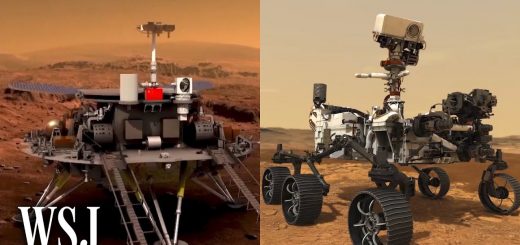China Has a Rover on the Moon & Here’s What It Found
We last went to the moon in 1972, except forthat rover China sent two years ago… It’sstill up there. Right now. moonpiesApollo 11, 12, 14, 15, 16 and 17 all landedon our moon. Astronauts collected and returned2,200 separate samples totalling 382 kilograms . Three Soviet Luna missions alsoreturned about 300 grams of lunarmaterial too. They get a participation award. While it may sound like it, that’s not a lotof moon to study. That last Soviet was back in 1976. So, whenChina landed on the moon in 2013, it shouldhave been pretty huge news! The moon had beenabandoned for almost 40 years. China’s Chang’e3 launched in 2013, making China the thirdcountry to land a wheeled vehicle on the moon’ssurface, and the first in the 21st century. The Chang’E-3 craft has a nuclear-poweredlander and a small rover named Yutu, or “jaderabbit. ” Yutu’s complement is classified byChina, but we know it has cameras, lunar-penetratingradar which can look 400 meters below thesurface, and two spectrometers for analyzingthe lunar rocks and soil . I know what you’re thinking, ‘MERCIA DID ITFIRST CHAANA. You know what, you’re right. We landed humans there first. And the U. S. S. R. landed a rover too, but there’s SO MUCH MOREto learn about the Moon. For example, Apolloonly dug 3 meters into the lunar surface,that’s not a lot. But, in March of 2015, Chineseresearchers published a paper in the journalScience announcing that Yutu’s lunar-penetratingradar had found NINE subsurface layers! Thissuggests that geological activity had occurredon the moon since the Imbrian period whichended 3. 2 billion years ago. Lunar geologistsbelieve “eruptions filled the at least five times. ” Scientistsdidn’t think the moon had been active at allin that period, so now more research is needed. For example, some scientists think the youngestvolcanic flows may be only a billion yearsold, others think maybe 100 million, but,really, they have no idea, because they’venever gotten to test them up close!Another study published in December 2015’sNature Communication used data from Yutu’sinstruments and announced the discovery ofa whole new type of moon rock! The basaltrocks that Yutu is exploring with her spectrometersare completely different from samples broughtback by the Apollo and Luna missions. Lunargeologists think: 1. this means there wasexplosive activity in the region. Which countersother theories. 2. that we still know almostnothing about the moon. As NASA put it, exploring the moon createsopportunities for international cooperationand economic expansion; plus it pushes theboundaries of our civilization. Yutu is thelatest in a long line of exploration of oursolar system, and though mechanical problemsrendered it immobile, and crippled, the Chineserover broke the record for the longest-operatingmission on the moon.













